Pancreas, structure, functions
Pancreas , pancreas is a large gland located on the back of the abdomen behind the stomach, at the level of the lower thoracic (XI-XII) and upper lumbar (I, II) vertebrae. The bulk of the gland performs an exocrine function: the exocrine part of the pancreas, pars exocrina pancreatis; The secret it secretes through the excretory ducts enters the duodenum.
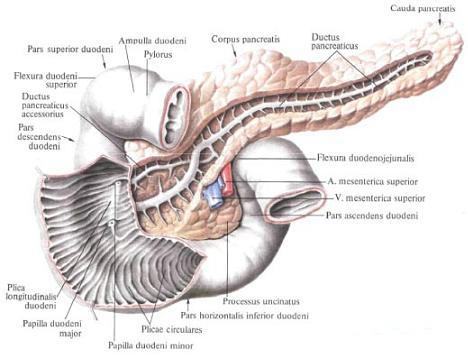
The exocrine part of the pancreas has a complex alveolar-tubular structure. Around the main duct of the gland are macroscopic pancreatic lobules, lobuli pancreatis, its parenchyma, consisting of a number of orders of smaller lobules. The smallest structures - pancreatic acini, acini pancreatici, consist of glandular epithelium. Groups of acini are united in lobules of the seventh order, the smallest excretory ducts are formed in them. The lobules of the gland are separated by connective tissue interlobular septa, septi interlobares.
Between the lobules lie pancreatic islets, insulae pancreaticae, representing the endocrine part of the pancreas.
The pancreas is located almost transversely, crossing the front of the spine, and 1/3 it is to the right, i.e., to the right of the vertebral column (in the horseshoe of the duodenum), and 2/3 to the left of the median plane of the body, in the epigastric region and in the left subcostal Region. On the abdominal wall is projected to 5-10 cm above the level of the umbilical ring.
In the pancreas, three subdivided right-to-left sections are distinguished: head, caput pancreatis, body, corpus pancreatis, and tail, cauda pancreatis. All departments are surrounded by a capsule of the pancreas, capsula pancreatis.
Distinguish between the anterior and posterior surfaces of the pancreas, and in the body - also the lower surface and three edges: front, upper and lower.
The length of the pancreas is 16-22 cm, width 3-9 cm (in the head region), thickness 2-3 cm; Weight 70-80 g. The gland has a grayish-pink color, almost the same as the parotid salivary gland. The gland's head is located at the level of I-II lumbar vertebrae, and the body and tail go obliquely to the left and upward, so that the tail is in the left hypochondrium region, at the level of XI-XII ribs.
The head of the pancreas, caput pancreatis, is the widest part; The right edge of it bends downwards and forms a hook-shaped process, processus uncinatus, directed to the left. When the head goes into the body of the iron, it narrows somewhat, this area is commonly called the neck of the pancreas.
The right half of the body has a slight bend up and forward, the left half forms a bend downward; The tail of the gland is pointing upwards. At the lower edge of the gland neck there is a pancreas incision, incisura pancreatis, which separates the hook-shaped process and continues along the posterior surface of the cervix upwards and to the right in the form of an oblique groove, in which the upper mesenteric artery and the superior mesenteric vein overlap (the latter merges here with the splenic vein and continues As a portal vein).
In the head of the pancreas passes the duodenum, embracing it in the form of a horseshoe: its upper part it adjoins the gland head from above and partly in front, the descending part covers the right edge, and the horizontal (bottom) part - the lower edge.
In the upper half of the gap between the head of the pancreas and the descending portion of the duodenum, the common bile duct, ductus choledochus, descends. The posterior surface of the head of the pancreas adjoins the right renal vein, the renal artery and the inferior vena cava; In the region of the cervix the left edge of the hook-shaped process is adjacent to the right foot of the diaphragm and to the ventral aorta.
The anterior surface of the head of the pancreas is covered with a leaf of the parietal peritoneum; The middle of it crosses the root of the mesentery of the transverse colon, causing the upper part of the head to be inserted into the cavity of the gland bag, bursa omentalis, and abuts through the peritoneum to the back surface of the stomach (to its pyloric part). The lower, covered abdominal part of the head, like the lower part of the duodenum adjoining it, is below the root of the mesentery of the transverse colon and faces the right sine of the lower abdominal floor, where the loops of the small intestine are located next to it.

The body of the pancreas, corpus pancreatis, lies at level I of the lumbar vertebra. It is a triangular (prismatic) form.
It distinguishes three surfaces: the front, back and bottom, and three edges: the top, front and bottom.
The front surface, facies anterior, faces anteriorly and somewhat upward; It borders the front edge, margo anterior, and on top - the upper edge, margo superior. The posterior surface, facies posterior, is facing posteriorly; It is restricted to the upper and lower margins, margines superior et inferior. The narrow lower surface, facies inferior, faces downwards and is bounded by the front and bottom edges.
The mesentery of the transverse colon is attached to the anterior margin and the sheets of the large omentum, omentum majus, fused with it. The top of the sheets along the anterior margin passes over into the parietal peritoneum, which covers the anterior surface of the pancreas.
The front surface of the gland's body faces the back of the stomach. The right part of the body adjoining the head is in front of the spine (II lumbar vertebra), protruding forward and upward, forming a gland tuber omentale. This hill lies at the level of small curvature of the stomach, faces the small omentum and comes in contact with the same tubercle of the left lobe of the liver, tuber omentale hepatis.
The posterior surface of the gland's body abuts the abdominal aorta, the celiac plexus, to the left renal vein; Left - to the left adrenal gland and left kidney. On this surface in the special grooves pass the splenic artery, and below, immediately below the upper edge, near the middle of the posterior surface, is the splenic vein.
The lower surface of the body of the pancreas is located below the mesentery of the transverse colon. In the middle of the stretch, a twelve-spindle flexure, flexura duodenojejunalis, is attached to it. To the left of the lower surface are the loops of the small intestine and the site of the transverse colon. The lower surface from the posterior separates the blunt lower edge. The front surface delimits from the posterior acute upper edge, along which the splenic artery passes. In the area of the glandal tubercle from the upper edge towards the small curvature of the stomach there is a peritoneal fold in which the left gastric artery passes.
The tail of the pancreas, cauda pancreatis, goes up and to the left and, moving away from the back wall of the abdomen, enters between the sheets of the gastro-splenic ligament, lig. Gastrolienale; Splenic vessels bypass here the upper edge of the gland and go ahead of it. The gland of the gland reaches the visceral surface of the spleen and abuts it with its end below and behind the gate. At the bottom it adjoins to the left bend of the colon.
The duct of the pancreas , ductus pancreaticus, extends from the tail to the head, located in the thickness of the gland substance in the middle of the distance between the upper and anterior edges, closer to the posterior than to the anterior surface. On the way of the duct, the ducts from the surrounding lobules of the gland come into it. At the right side of the head, the duct connects with the common bile duct into the hepatic pancreatic ampulla, ampulla hepatopancreatica, on top of the large papilla of the duodenum, papilla duodeni major.
Before joining the common bile duct, a layer of circular muscle bundles of the pancreatic duct thickens, forming a sphincter of the pancreatic duct, m. Sphincter ductus pancreatici, which, as noted, is actually part of the sphincter of the hepatic pancreatic ampulla.
In the upper part of the head there is often an additional duct of the pancreas, ductus pancreaticus accessorial, which opens with a separate mouth above the main papilla duodeni minor at the top of the small papilla of the duodenum.
Rarely is there an additional pancreas, pancreas accessorium, which is a separate nodule, most often located in the wall of the stomach or the initial section of the small intestine and having no connection with the main pancreas.
The tail of the pancreas touches the spleen, lien (splen), - the organ of the circulatory and lymphatic system.
Innervation: plexus coeliacus and n. Vagus.
Blood supply: a. Pancreaticoduodenalis superior (from a. gastroduodenalis), a. Pancreaticoduodenalis inferior (from a. Mesenterica superior) and rr. Pancreatici (from a. Lienalis). Venous blood flows through vv. Mesentericae superior et inferior, v. Lienalis and v. Gastrica sinistra in v. Portae. Lymphatic vessels carry lymph to the nodi lymphatici pancreatici, pancreatoduodenales, lienales, pylorici, lumbales.
You will be interested to read this:


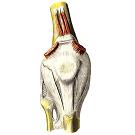
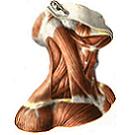
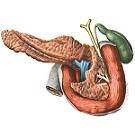


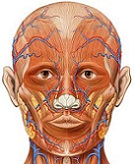

Comments
When commenting on, remember that the content and tone of your message can hurt the feelings of real people, show respect and tolerance to your interlocutors even if you do not share their opinion, your behavior in the conditions of freedom of expression and anonymity provided by the Internet, changes Not only virtual, but also the real world. All comments are hidden from the index, spam is controlled.